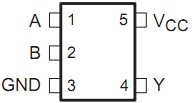Uh, I don't mean to interrupt this spirited discussion. I've skimmed the last few pages with the intent of reading them in detail later on.
I purchased one of the first available Thereminis back after their availability was initially announced (from Kraft Music in early June). I played with it a bit in the first few days, and then the demands of work, garden work, household work, and work on two "real" Theremins (EWS with the Plus field upgrade and Thierry's special board, and the restoration of the kit-based pseudo-Troubador I posted about last November) have taken me away from it.
Dewster's pictures brought me back, having saved me the trouble of opening up my own unit (at least for the moment...). I noted Ilya's schematic of the somewhat sparse proximity-detecting front-end, and the three-wire ribbon running from the pitch board to the main board. But am I the only one who noticed the four-pin connector lying UNUSED next to the pitch board connection? Doesn't anyone have any curiosity as to what purpose this serves, or was intended to serve? Perhaps it's there for some future hardware/software upgrade that may solve (at least in part) some of the issues discussed herein.
You may argue that I jumped the gun when I bought the Theremini so soon, and in fact my intent when the device was initially announced was to ignore it completely. But I have several Casios around the house; my first Theremin (which never quite worked, or at least not how I expected it to) was the SWTPC kit from the early '70s; I've managed to assemble a Theremax and get it sort of working (it will be modded and recased soon), with another kit waiting to be assembled; I've put together several of the original Jaycar 2000 Theremins (stock and with custom mods, including Max's); I have the Jaycar MIDI Theremin (now THERE is a POS if ever there were one) in partial completion, and what is either the Mini Theremin Mk II or the current Mk II, as yet untouched; I have the two Theremins mentioned above, plus a fully assembled and functional quarter-sawn-oak EWS (unmodified); and I have a couple of the Urs Gaudenz Open Theremin UNO boards to feed my Arduino habit. All of which is by way of saying the following:
(1) I'm not much of a Theremin player (yet), precision or otherwise, but I have the tools in house to become reasonably competent with practice.
(2) I'm inclined to use the Theremin as a texture and/or effect, and I have the tools in house to make that a reality as well.
(3) I never saw the Theremini as a means to attain (1) but as a possible addition to my arsenal for (2), especially with the USB MIDI output and the Animoog incorporation.
(4) I don't see the Theremini as a fait accompli, but rather as a challenge -- NAY, a GAUNTLET cast down hard before me -- to make it a potentially better musical device, if not an actual instrument per se.
(5) I write software for a living and the Arduino and similar platforms are among my hobbies, so software changes and upgrades, as well as custom code, don't concern me.
So I see the Theremini more as R&D and modification fodder than as a baguette or a turd. It's the musical equivalent of Charlie Brown's Christmas tree; if I wave my hands over it long enough and hard enough, maybe I can make it something pretty and useful, even if only to myself.
Anyway, any speculation about that unused connector?



